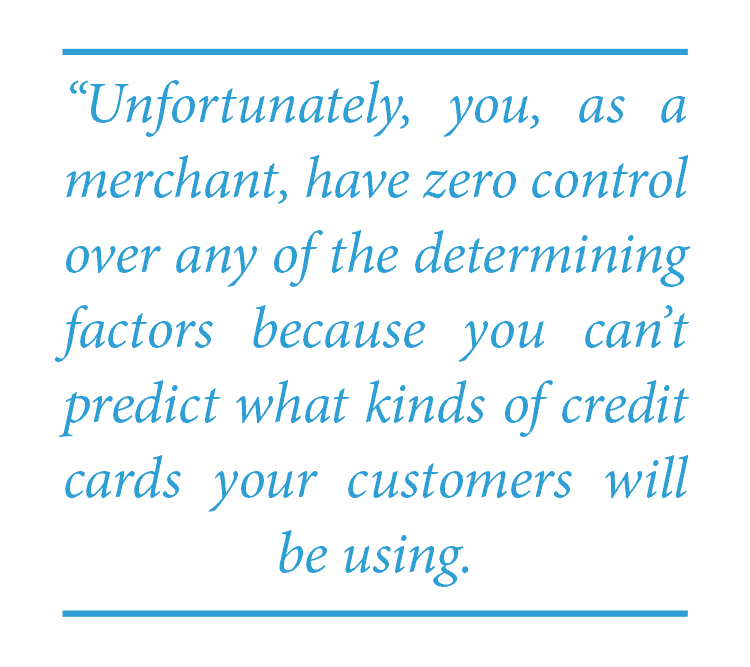Whether you’re operating your business on a shoestring budget while working hard to break into the local market or you have a high-volume business that processes thousands of transactions per day, you may find yourself asking one question often, “WHERE IS MY MONEY?”
The answer can often depend on whether (and how) you’re batch processing your business’s credit card transactions. Seemingly small differences between batching processes can often mean being paid in a matter of days rather than hours, so educating yourself on this process is the key to managing your business’s cash flow. Read on to learn more about the advantages posed by different batching procedures, as well as how you can decide which option works best for your business.
Should you batch process your credit card transactions?
Most businesses that frequently process credit card transactions “batch” these transactions by submitting them all at once during a specified period (or periods) during the day rather than pushing each one through individually at the time of sale. Approval of these transactions then triggers a transfer of funds to your bank account. There are several advantages to batching credit card transactions, including:
- Speed: When you run a credit card through the scanner, you’ll receive a nearly instantaneous confirmation that

the customer has sufficient available credit and that the card isn’t stolen. Although this transaction won’t clear until later, when it’s batched through, this preliminary approval allows you to return the card to the customer and quickly move to the next person in line rather than waiting for the customer’s credit card company to communicate with your bank. - Ease of tracking: When looking for a single credit card transaction to respond to a dispute or provide further information, it’s often much simpler to go through a batched list than to try to pick out a single credit card transaction from a mix of credit, cash, and check payments. Keeping these payments together can also help you easily check that you’re receiving all the funds to which you’re entitled, rather than having payments trickle into your account in a piecemeal way that’s harder to track.
- Convenience: You can push through batched transactions just about anywhere and at any time – giving you the flexibility you need to handle it at the close of the business day, while waiting in line at the bank, or even sitting at home in front of the television.
Despite these clear benefits, there can sometimes be potential pitfalls to credit card batching. Depending on how you structure your batched payments and how frequently you push the transactions through, it could be days or even weeks before these funds hit your operating account. If you do decide to batch payments rather than process them individually, it’s important to analyze your batching process to ensure you’re able to have your money deposited as quickly as possible and in a way that complements your workflow.
How can you decide the best batching method for your business?
While some business owners opt to manually batch the day’s credit card payments and push them through in a single transaction, this can be risky if you’re the only one responsible for this task. An illness, injury, or sudden unplanned trip could interfere with your normal batching schedule and delay your business’s receipt of payments, putting you behind the 8-ball when it comes to maintaining cash flow.
As a result, many business owners have switched to automatic batching – this process will batch and submit your business’s credit card transactions at a pre-selected time each day. Having this consistency can quickly put you
 on the path to predictable cash flow. Those whose businesses see dozens or hundreds of credit card transactions each hour may want to schedule their batching to take place several times per day, while businesses with relatively few credit card transactions should be able to get by with a single end-of-day submission.
on the path to predictable cash flow. Those whose businesses see dozens or hundreds of credit card transactions each hour may want to schedule their batching to take place several times per day, while businesses with relatively few credit card transactions should be able to get by with a single end-of-day submission.
If your existing credit card processing equipment is older and a bit outdated, it may be worthwhile to upgrade to a more modern system if you’re concerned about cash flow — older, slower systems can affect the amount of time it will take your transactions to process and may make it more difficult to set batching to occur automatically.
Another key to successful batching is keeping the lines of communication with your bank open. If you don’t already have access to a business banker to act as your point of contact for financial questions, you may want to investigate this service (or even switch banks), as having someone to quickly answer your questions — like where is my money? — can be invaluable. For example, you’ll be able to find out from your banker what time transactions will need to be received in order for payment to be made the next day, allowing you to schedule your batch times to capture the entire day’s transactions without trying to guess when you’ll see these funds in your account.
Your banker will also be able to work with you to find the batching methods that will allow you to gain access to your money in a way that makes sense for your business. Because factors, like different time zones, can also impact the time of processing, being able to consider all the factors at play will put you ahead of the curve. Fortunately, with just a bit of experimentation and consultation with your business banker, you should be well on the road toward efficient credit card batching.
